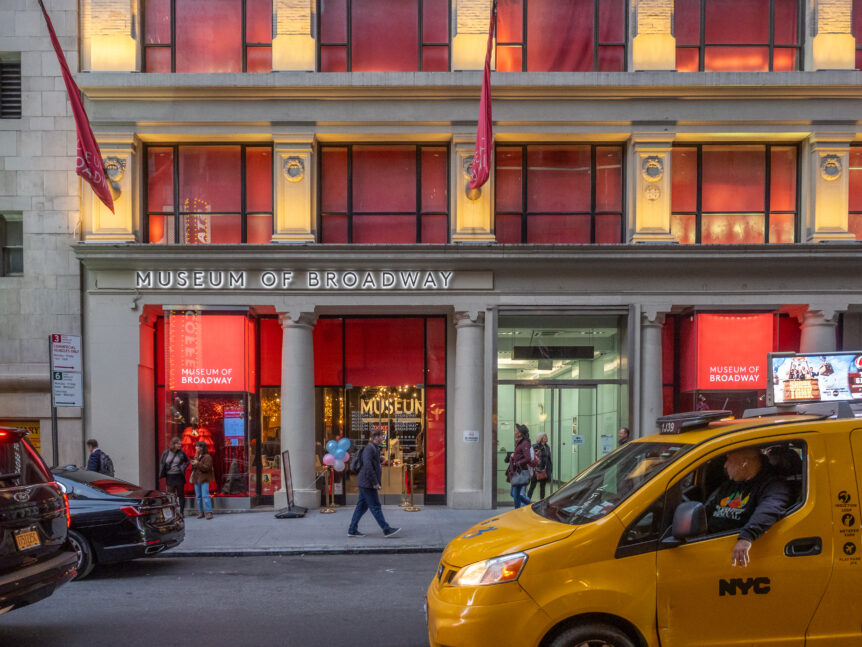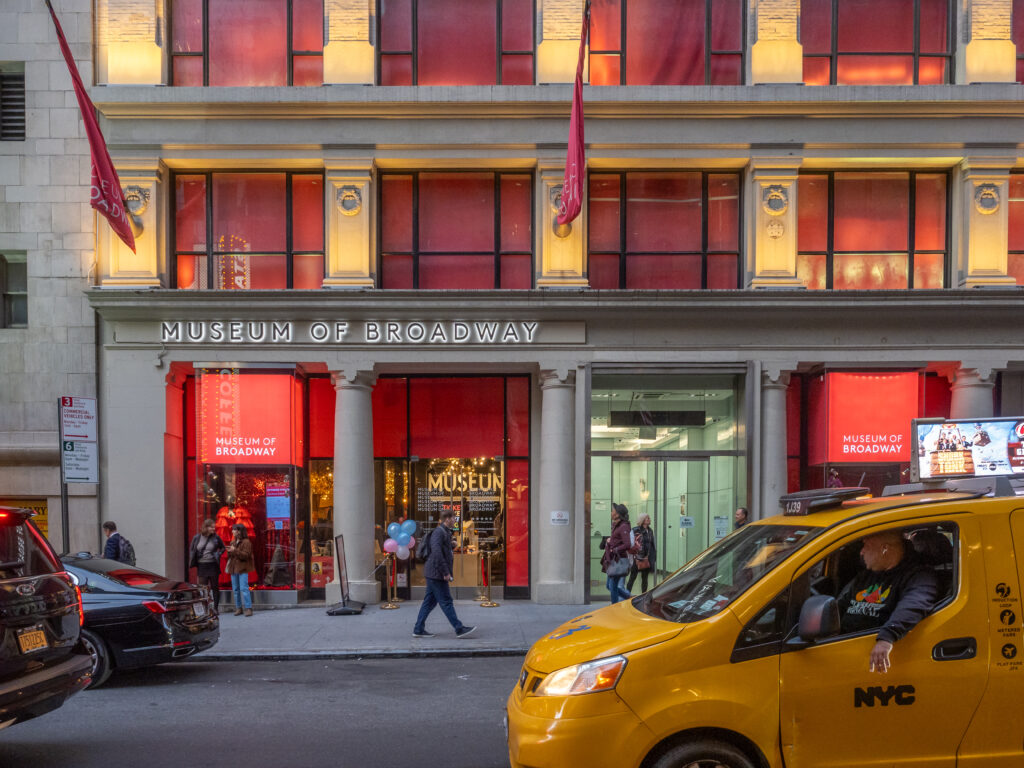
In early September 1882, New York City was abuzz with the upcoming electrification of the city. Thomas Edison’s Edison Illuminating Company lit up lower Manhattan, and though they only signed a grand total of 59 customers by the end of that September, it felt like the city was on the precipice of a major change. By the end of 1882, Edison’s client base had dramatically increased, with over 500 customers using electricity to light their homes. By 1886, the new-fangled invention of electric lights was prominently deployed in the dedication of the Statue of Liberty, uplighting France’s opulent gift.
Over a year before Edison’s grand revolution, however, another stretch of street in Manhattan was already illuminated in an electric glow. The Brush Electric Company, inspired by the designs of Parisian public electricity, developed a system of arc lamps that lit up a two-mile span of Broadway, between Herald and Union Squares, over a year before Edison turned on the light to other parts of Manhattan.
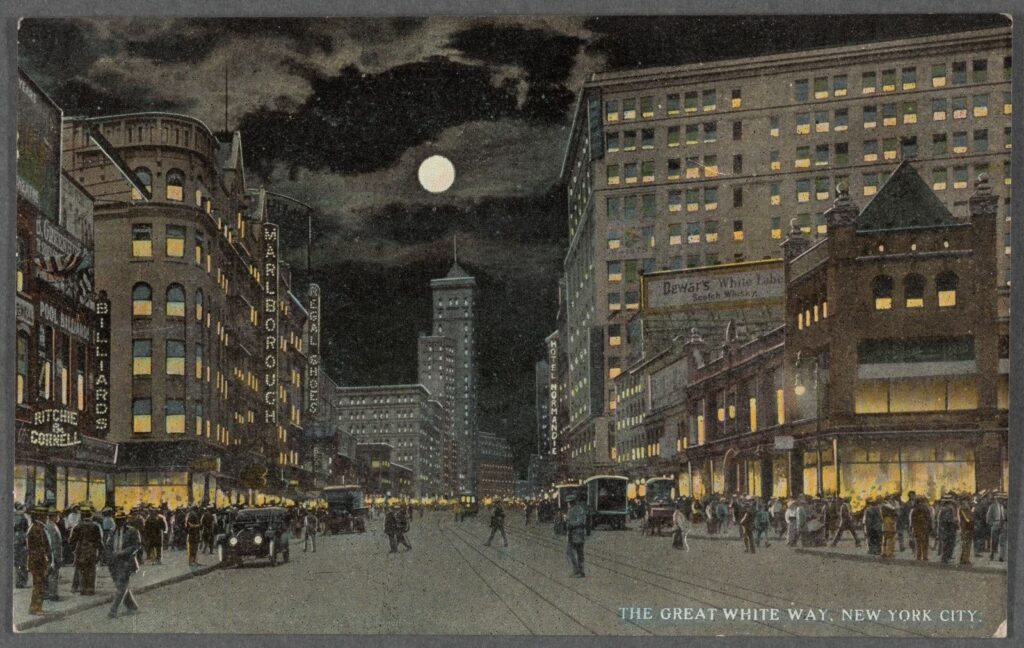
This area of early illumination earned it the nickname, “The Great White Way” — a street awash with the glow of electric lighting. Still, today, Broadway is a place of groundbreaking innovations and inventions, whether in technology or the arts.
The first Broadway theater opened in 1735 (Nassau Street Theater), and the theaters and playhouses of Broadway have endured for centuries as bastions of the New York arts scene. By the 1920s, the neighborhood was synonymous with American entertainment. Largely regarded as the birthplace of the musical, the genre cemented Broadway’s legacy with the help of playwrights like Oscar Hammerstein II and Richard Rodgers and plays like Show Boat (1927) and Oklahoma! (1943). By the 1970s and 80s, however, the neighborhood had lost some of its glow, suffering a decline with theatres closing and crime on the rise. Today, the introduction of the Disney Company to the Broadway scene (and plays like The Lion King (1997)) have brightened the marquee lights once again.
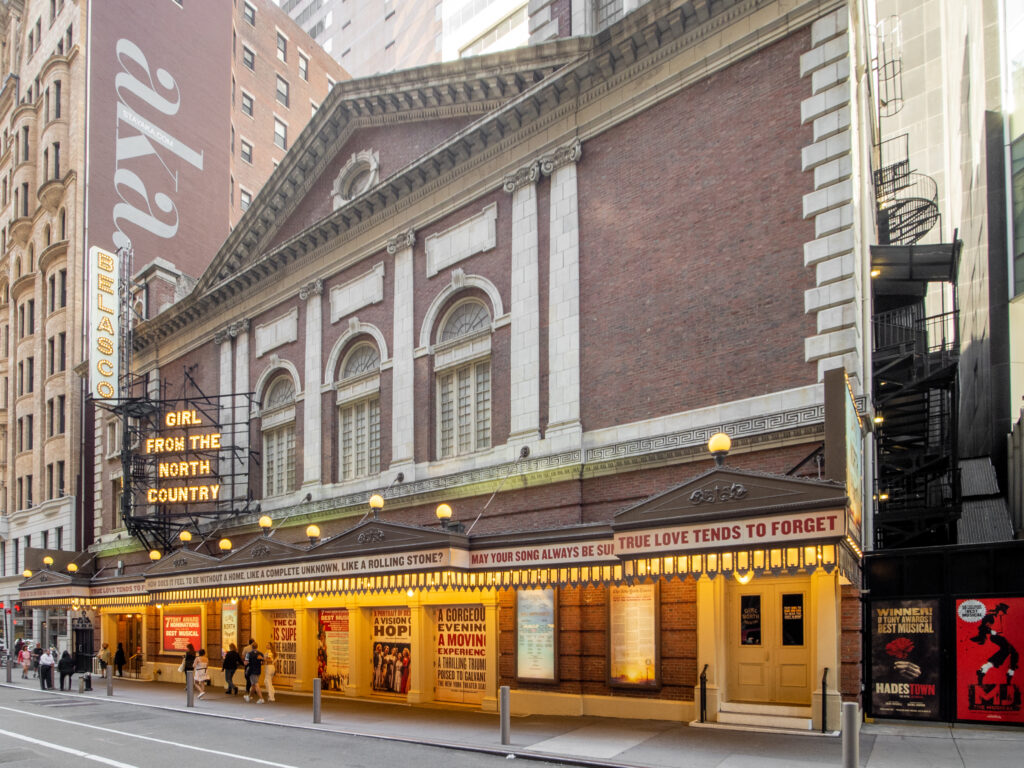
Visitors to the Great White Way now have the option of immersing themselves in a completely historical Theater District experience, catching a show at one of the historic theaters (like the Lyceum (1903), the Belsaco (1907), or the newly reopened Hudson (1903)). Then, one can stroll for a meal at Sardi’s, under framed caricatures of New York’s cinema and theater legends, from Lucille Ball to Lin-Manuel Miranda. And, finally, a frantic feast can come to a close with a good night’s rest in one of the many historic hotels near Broadway.
The beaux-arts Knickerbocker claims a piece of cocktail history as the location where the martini was invented in 1912 for John Rockefeller (though this is widely disputed). And, in the former Hotel Langwell, now operated by AKA Hotels, one can find a piece of architectural history sandwiched directly between the Hudson and Belasco theaters. The building was designed by George Keister (who also designed the Belasco) and built in 1893-1894 in an imposing Romanesque Revival manner, with salmon-colored brick and limestone façade, curving bay windows (from 3rd to 6th floors), and steep gables with decorative dormers from which one can gaze upon another historic hotel — the Algonquin, right across the way.
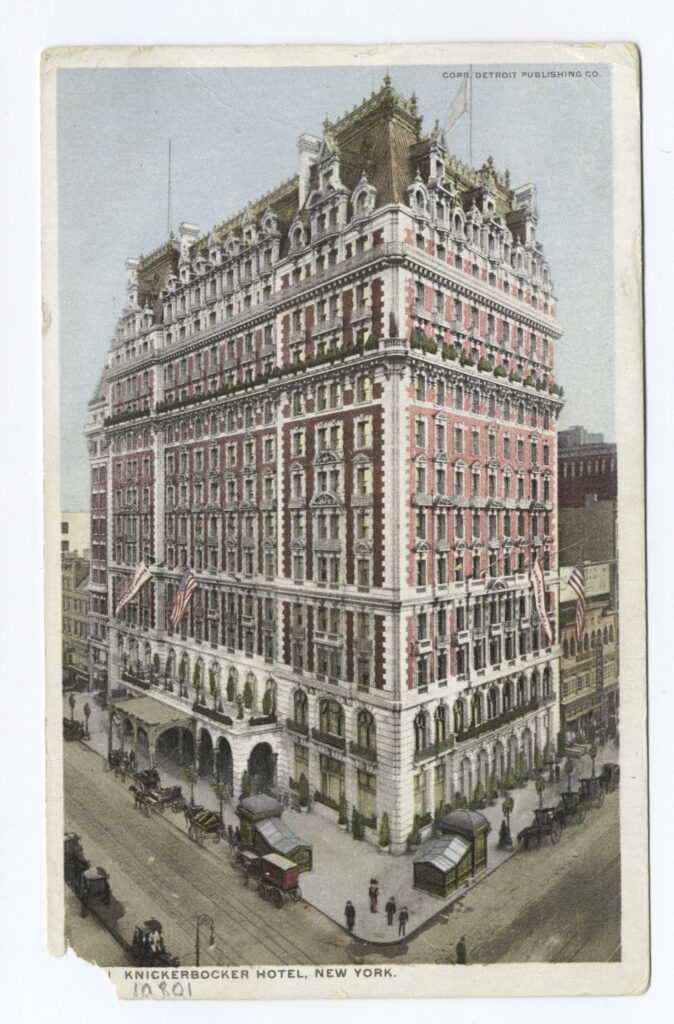
The Algonquin Hotel opened in 1902, and its polished oak panels and amber-lit lobby have long welcomed playwrights, critics, and actors who helped shape New York’s theatrical identity. In the 1920s, the hotel’s Rose Room played host to the famed Algonquin Round Table, where wits like Dorothy Parker, Robert Benchley, and Alexander Woollcott traded barbs over lunch, giving rise to some of the sharpest humor of the Jazz Age. Today, the Algonquin endures as both a working hotel and a living relic of Broadway’s literary and theatrical past.
Putting this celebrated neighborhood and its history into perspective is the Museum of Broadway. The museum is jam-packed with costume and set displays, documentary films, and immersive visual storytelling stages of the various communities that made Broadway, well Broadway. Integral groups get a much-deserved spotlight in the space, from the original Black storytellers of Broadway to the LGBTQIA+ and ally communities who rally behind AIDS research and advocacy. The Museum of Broadway explores the area’s history as one that mirrors society and vice versa.
The future is bright for this hallowed stretch of Manhattan roadway. What began as an experimental glow-up in Gilded Age America, the lights of Broadway are burning at an unprecedented pace in this modern era. Celebrating stories that resonate with the best joys,
sorrows, and everything in between of the human condition, the Great White Way is as relevant now as it was in its fabulous heyday.

